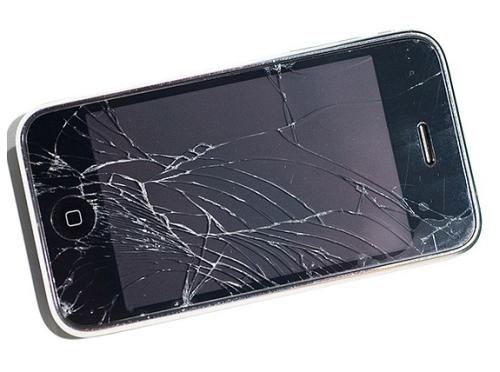Apple iPhone patent may prevent cracked screens

Smartphones now have beautiful touchscreen displays that are getting bigger all the time, but if you accidently drop your device there is a good chance the display will smash, but a new Apple iPhone patent has emerged that may prevent cracked screens in the future.
We have already heard earlier today that most new mobile phones are damaged within three months after first coming out of the box, but a clever new Apple patent may help prevent costly screen repairs in the future.
Apple may not have had so many innovative new ideas lately on released hardware, but if this latest patent ever sees the light of day it will certainly give rival manufacturers something to think about. The patent that has been discovered by AppleInsider is being called the “Protective Mechanism for an Electronic Device”, and basically can tell if the handset has been dropped and shifts the orientation of the device as it is falling.
This will hopefully mean the handset will land on its back, and while not guaranteed could prevent the display from cracking. When the device is in mid-flight accelerometers and position sensors along with image sensors will send a signal to the protective mechanism, which will then cleverly shift the weight of the device so it will hopefully land on its back.
The patent was originally filed back in September 2011, and may still be a little too involved to be seen anytime soon, but you never know it may make an appearance next year in the iPhone 6 that is already tipped to feature new display technology.
Would you like to see such a system in an iPhone?

Comments
One thought on “Apple iPhone patent may prevent cracked screens”
Doesn’t this raise issues of feasability with anyone else?
IF (BIG IF) this idea could work and theoretically it seems like a possibility, it would be a huge battery drain as it attempted to detect the difference between it “falling” and “bouncing” to the experience of being in a normal human environment of….in your pocket as you walk or run, in your purse as you do anything like swing it, set it down, pick it up, push it move it. Every move of the human hand and arm in trying to use the device would be detected as a potential fall and deciding whether it is or isn’t actually falling would require reading the sensors and performing the required calculations.
So 99% of the time the device is fine,yet- it expends energy to figure that out, and then it expends energy to “move” the insides around to “protect” them.
This is why laptop reliability manufacturers went to “shock” mounting hard drives, but that was to protect “parts that moved” not apparently, APPLE delicate phones that do not have moving parts. 3 months ownership until breakage? Jonny Ives my respect for your design has diminished. Form does not trump function for a device we need to be able to use.